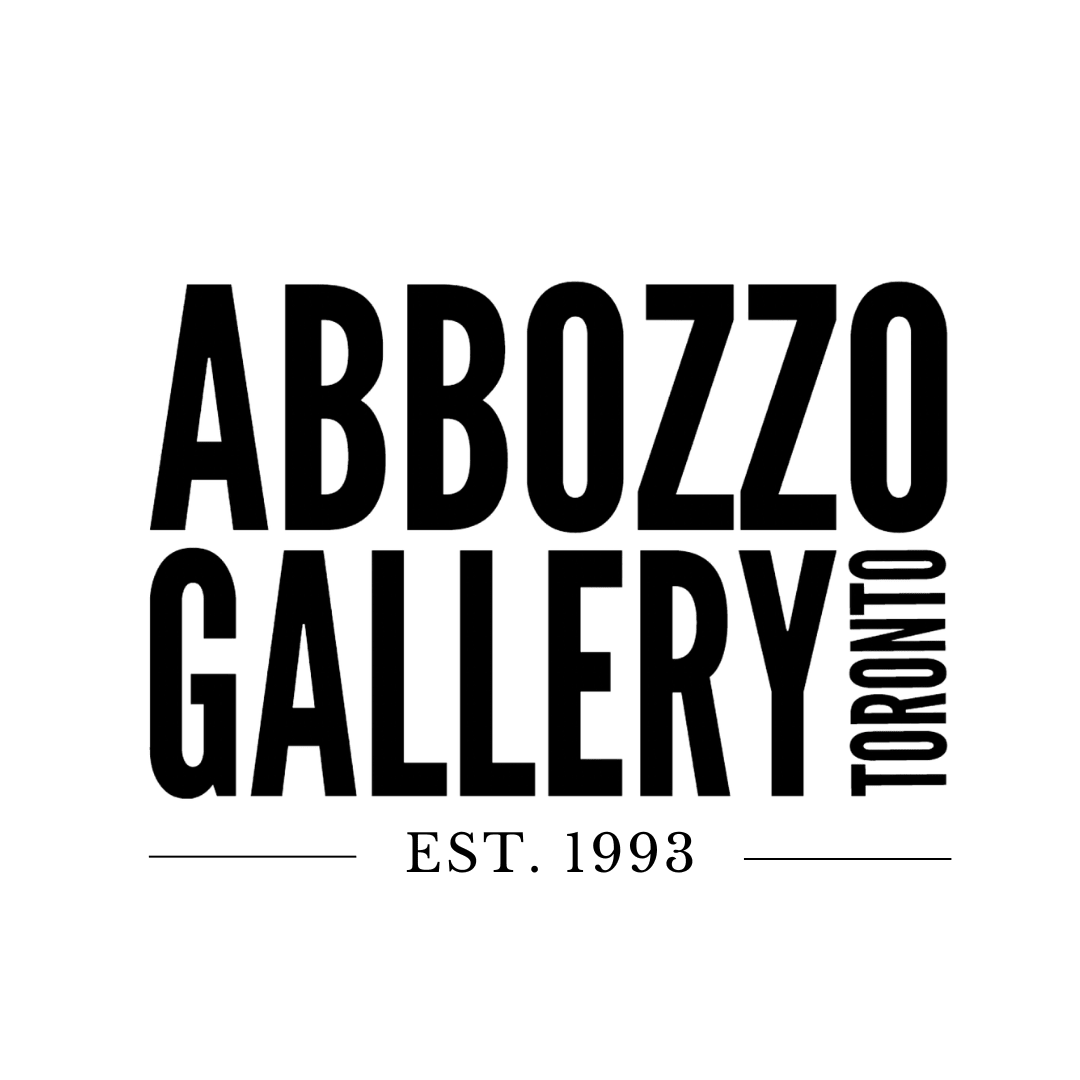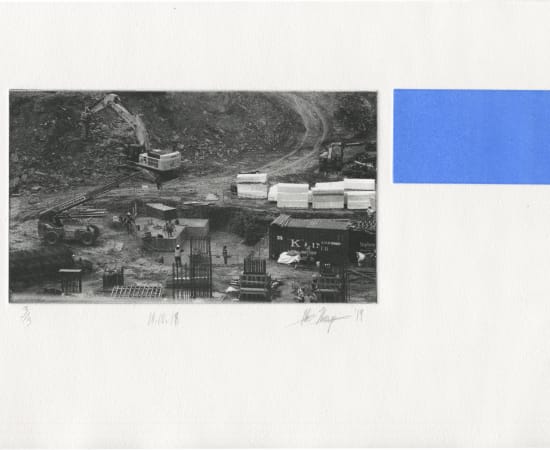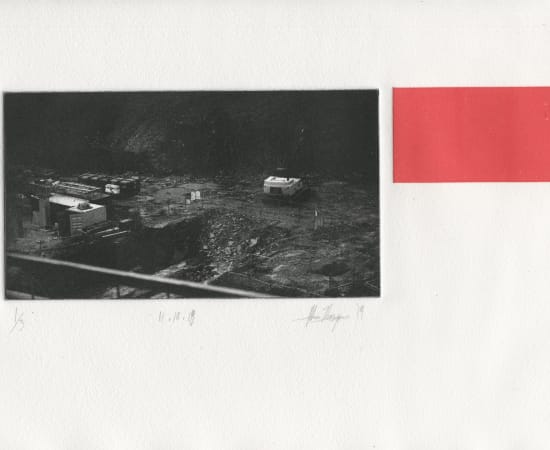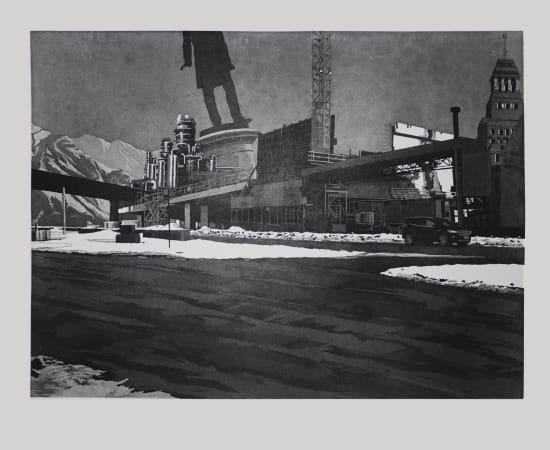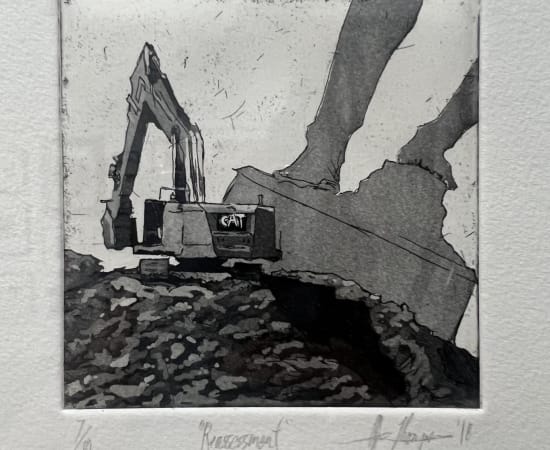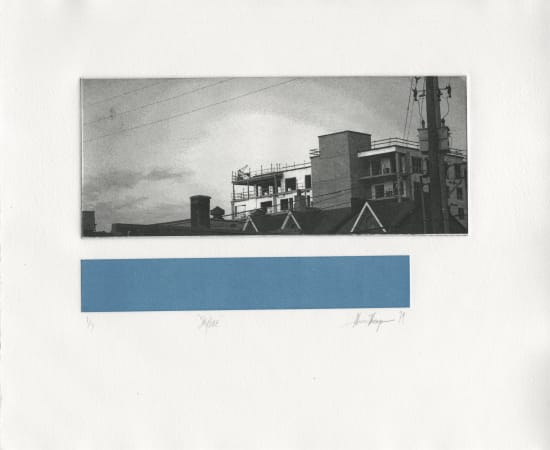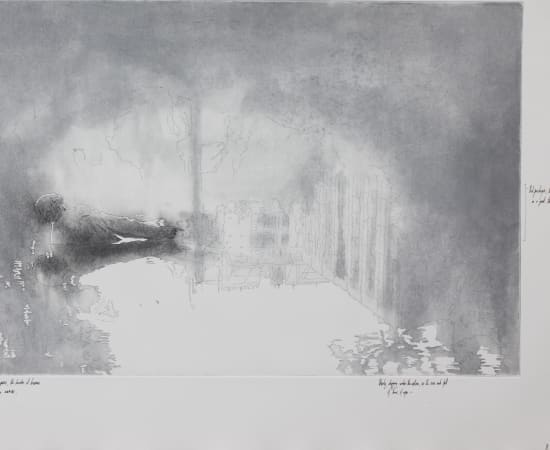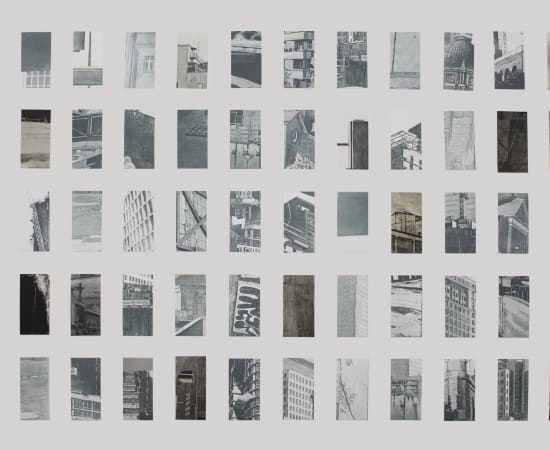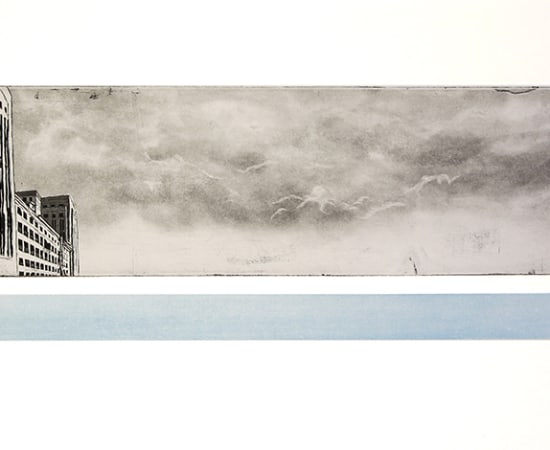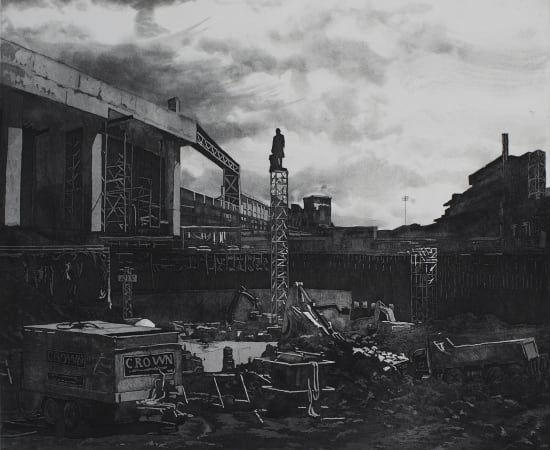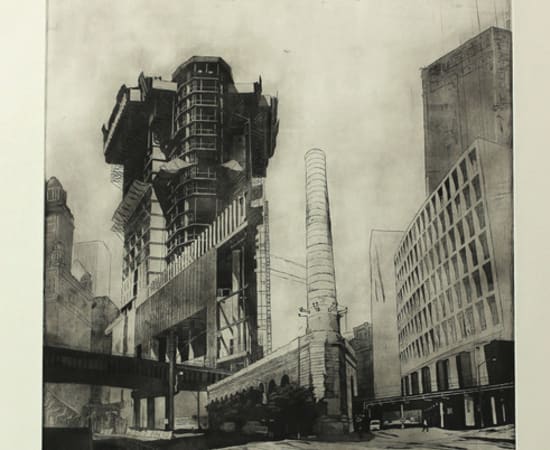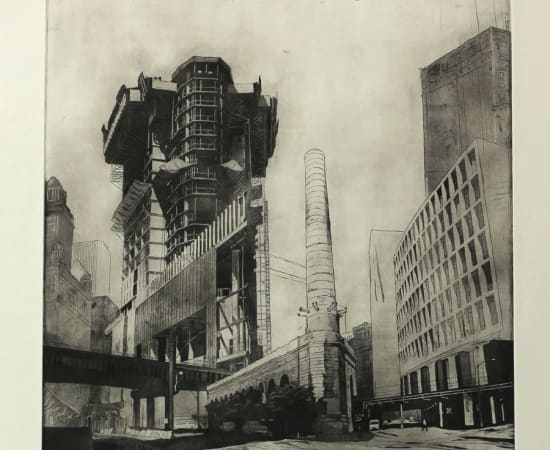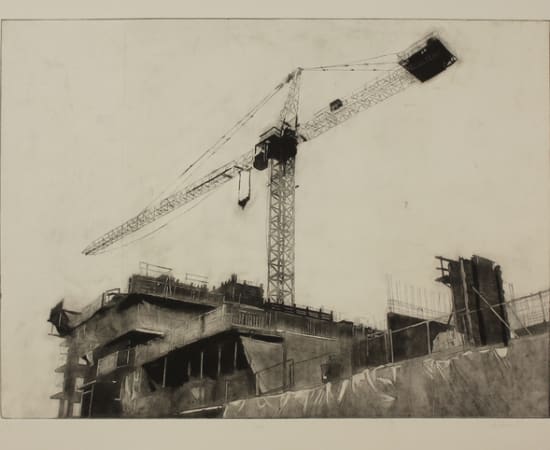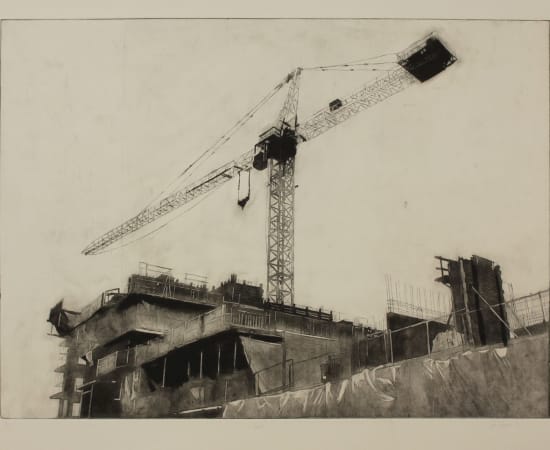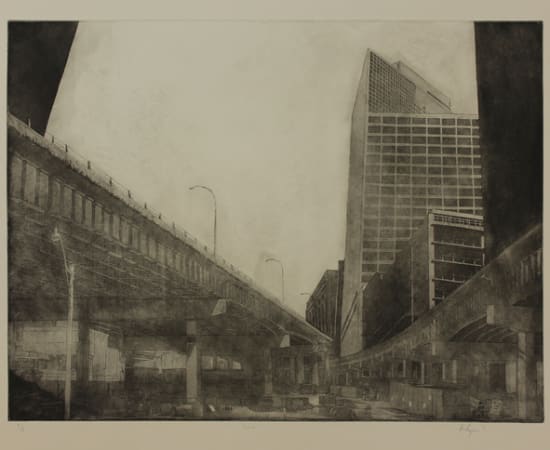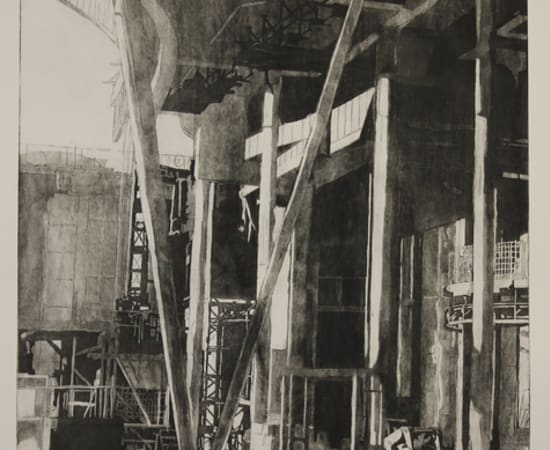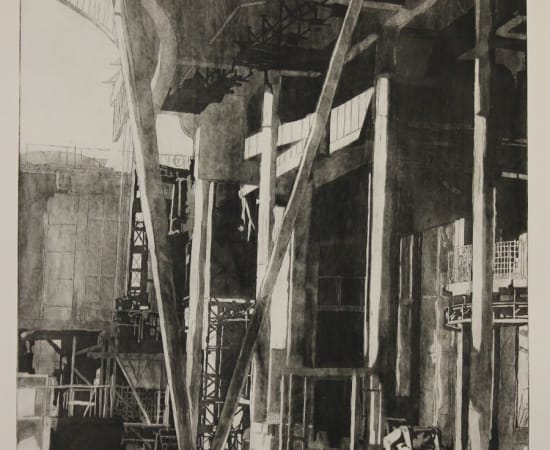Through a lens of printmaking, installation, and drawing, my research-creation practice is situated at the intersection of built environment, carbon economy, and identity formation.
My prints are monochromatic fabrications, using monumental, institutional, and infrastructural architecture to create hypothetical cityscapes from existing buildings. Through the process of combining disparate places, I illustrate spaces that are simultaneously plausible, familiar, and forlorn. Recognizable structures emerge outside of their contexts, looming above empty streets that do not exist. The inter-reliant nature of urban areas and the compression of distance as technology connects cities underpin my methodology, leading to reflections on architecture that embrace its timeliness/timelessness.
I employ art-historical genres in a conceptual play, borrowing their semiological associations to describe our relationships to architecture. As I consider its influence on personal identity, it becomes self-portraiture, the accumulation of experiences and conditions layering like the floors of a building; still-life affords connections between geographic distribution, conspicuous consumption, and imitation. Each genre enables me to explore environments through my use of collage processes, leading to surprising configurations. A Romantic richness permeates the construction sites, idle excavators, and pipeline infrastructure that dominate my print-based work, inferring connections between human ingenuity, and the precarity of our contemporary times. Drawing from Italo Calvino’s Invisible Cities (1972) and the prints of Giovanni Battista Piranesi (1720-1778) as poetic inspiration, my objective is to reconfigure the viewer’s understanding of space in a way that is wholly contemporary.
Ultimately, my work seeks to track anthropogenic presence, as it is written across the cityscapes and ecosystems of North America. The multi-disciplinary nature of the challenges confronting us in light of human-induced climate change leads me to think and study in many directions simultaneously. In the process, I intend to instil in the viewer a sense of scale and weight that is palpable, concrete, and potentially inspiring, encouraging deep reflections on our relationship to the structures and systems that we impose upon space.
